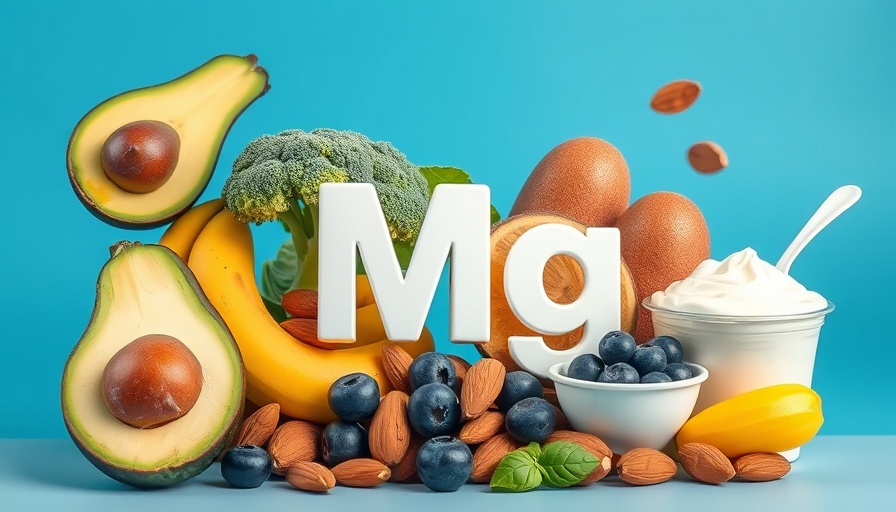
Understanding Magnesium: Balancing its Benefits and Potential Risks
Magnesium, often dubbed the "forgotten mineral," is essential for numerous bodily functions, playing a pivotal role in everything from energy production to maintaining heart health. Many people are aware that magnesium can offer incredible health benefits, yet, like any nutrient, too much of a good thing can lead to potential side effects. This article delves into both sides of magnesium—its many benefits and the risks of excessive consumption.
What Makes Magnesium Essential?
Before diving into the potential side effects of too much magnesium, it’s crucial to understand its profound benefits. Magnesium helps maintain heart rhythms, supports nerve function, enhances bone density, and is known for alleviating muscle cramps. Additionally, it regulates neurotransmitters, thus playing a key role in promoting better sleep quality.
Nutritionist Falak Hanif emphasizes the importance of magnesium in premenstrual discomfort. “It helps regulate hormones, easing symptoms that many women experience,” she explains. Furthermore, magnesium’s role in aiding digestion cannot be overstated; it assists in drawing water into the intestines, which facilitates regular bowel movements.
Understanding Magnesium Overdose
While magnesium is beneficial, an excess can lead to overdose, particularly if consumed through supplements rather than natural food sources. The US National Institutes of Health sets specific dietary allowances based on age and gender. For instance, adult men require about 400–420 mg per day, while adult women need between 310–320 mg. Exceeding these amounts, especially through supplements, heightens risks of toxicity.
Spotting the Signs: Magnesium Side Effects
Excessive magnesium intake typically does not pose a threat when it’s sourced naturally from foods. The body efficiently eliminates excess magnesium ingested through food. However, when looking at supplement intake, side effects may arise, particularly in those with kidney issues which impair magnesium clearance.
Common side effects of magnesium overdose can include diarrhea, nausea, and abdominal cramping. More serious side effects may involve irregular heartbeat, low blood pressure, and respiratory issues. These are signs that indicate toxicity and require immediate medical attention.
Magnesium in Your Diet: How to Proceed Wisely
For those looking to enhance their magnesium intake, focusing on food sources is the safest route. Foods such as leafy greens, nuts, seeds, and whole grains provide magnesium and other nutrients that promote overall health. By adopting a balanced diet rich in diverse food groups, individuals can reap the benefits of magnesium without the risks associated with supplementation.
Fitness enthusiasts, pregnant women, and those experiencing hormonal fluctuations should be particularly aware of their magnesium levels. Consulting with health professionals about tailored dietary plans is highly recommended for those considering magnesium supplements.
Diversifying Perspectives on Magnesium Usage
There are varying opinions on magnesium supplementation, and it’s crucial to approach it from both sides. Some health advocates argue that the majority of individuals can meet their magnesium needs through their diet alone. Meanwhile, others suggest that certain populations, such as the elderly or athletes, may benefit from targeted supplementation under medical supervision.
Listening to your body’s signals is essential. If you notice symptoms such as digestive upset or fatigue, it might be time to reassess your magnesium intake and consult with a healthcare professional. Diverse perspectives suggest that awareness, caution, and informed choices are key when it comes to magnesium.
Take Charge of Your Health: Practical Tips for Magnesium Awareness
To ensure you’re getting the right amount of magnesium while avoiding excess intake, consider these actionable tips:
- Track Your Intake: Keep a food diary to monitor your magnesium consumption and identify sources.
- Choose Whole Foods: Prioritize eating whole foods rich in magnesium rather than relying on supplements.
- Consult Experts: Speak to a nutritionist or healthcare provider to assess your specific needs.
Conclusion: Embrace Balance in Nutrition
Magnesium plays a crucial role in your health, but like any nutrient, it should be consumed in moderation. If you’re considering adjusting your magnesium intake for better health, it’s key to weigh both the benefits and potential risks carefully. Embracing a nutrition-focused lifestyle can empower you to make informed choices that benefit your well-being for the long run. Start by integrating magnesium-rich foods into your diet, complementing them with a balanced approach to your overall nutritional needs.
Call to Action: Review your diet today and consider incorporating more magnesium-rich foods into your meals for optimal health!
 Add Row
Add Row  Add
Add 




Write A Comment